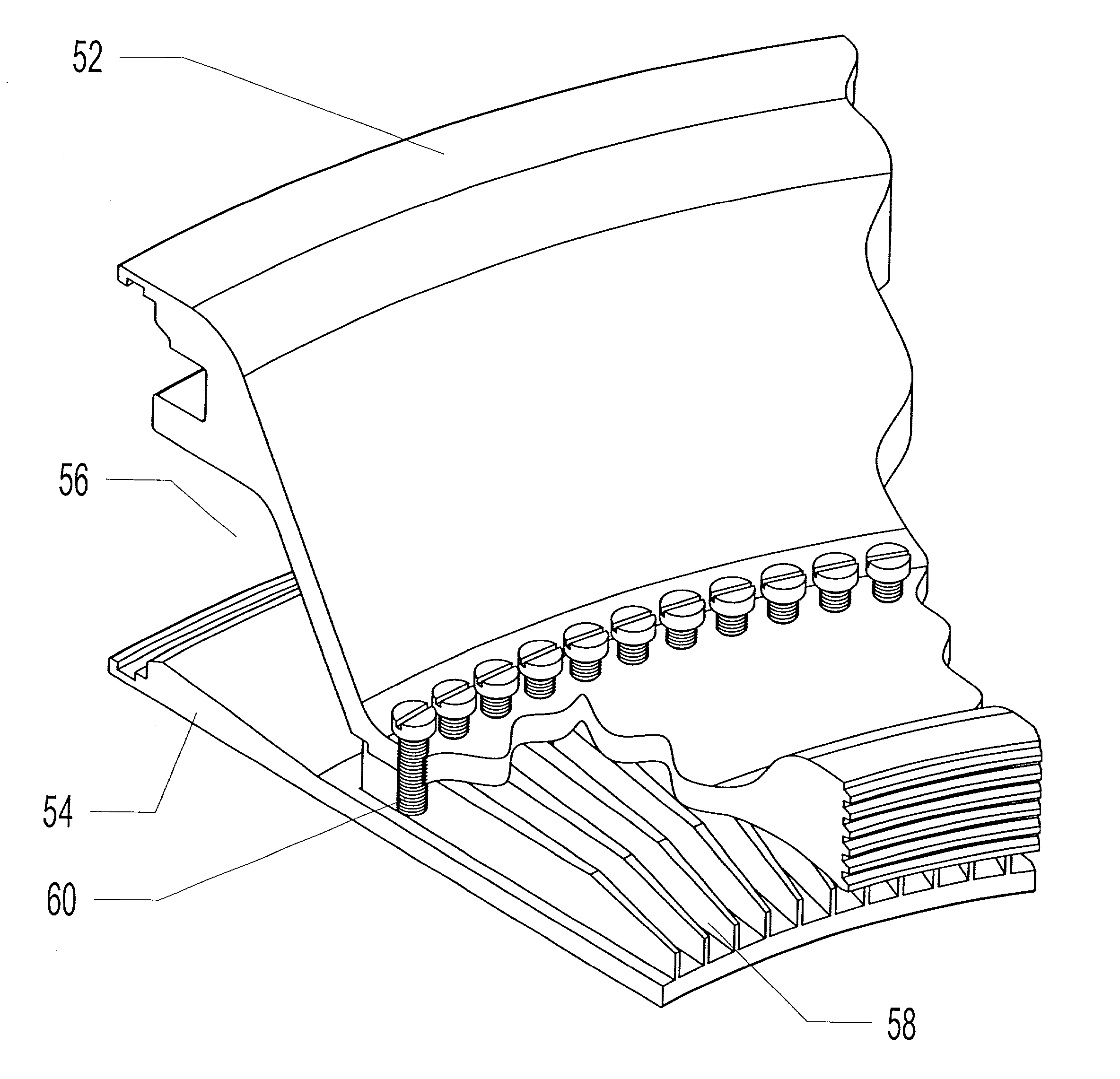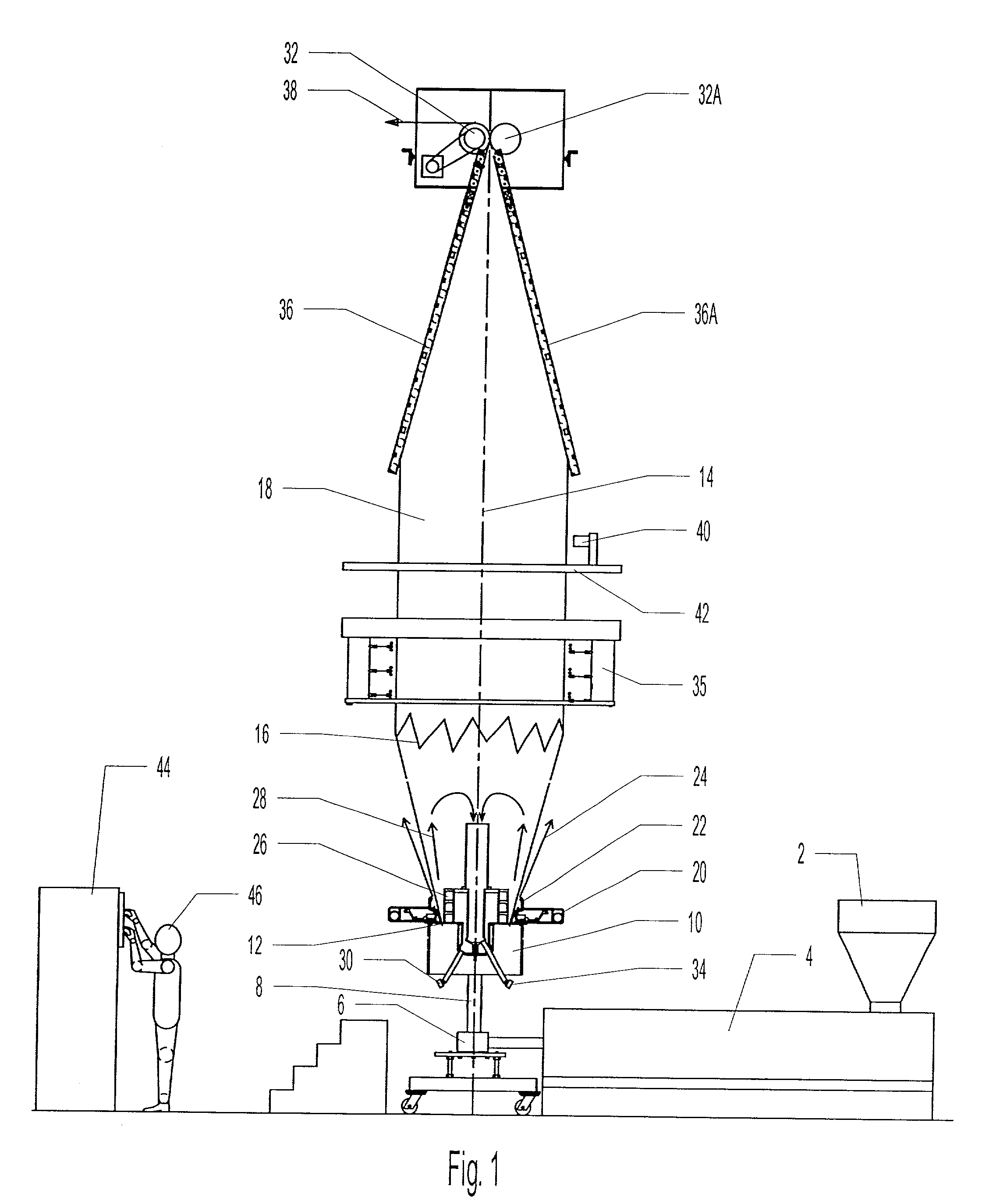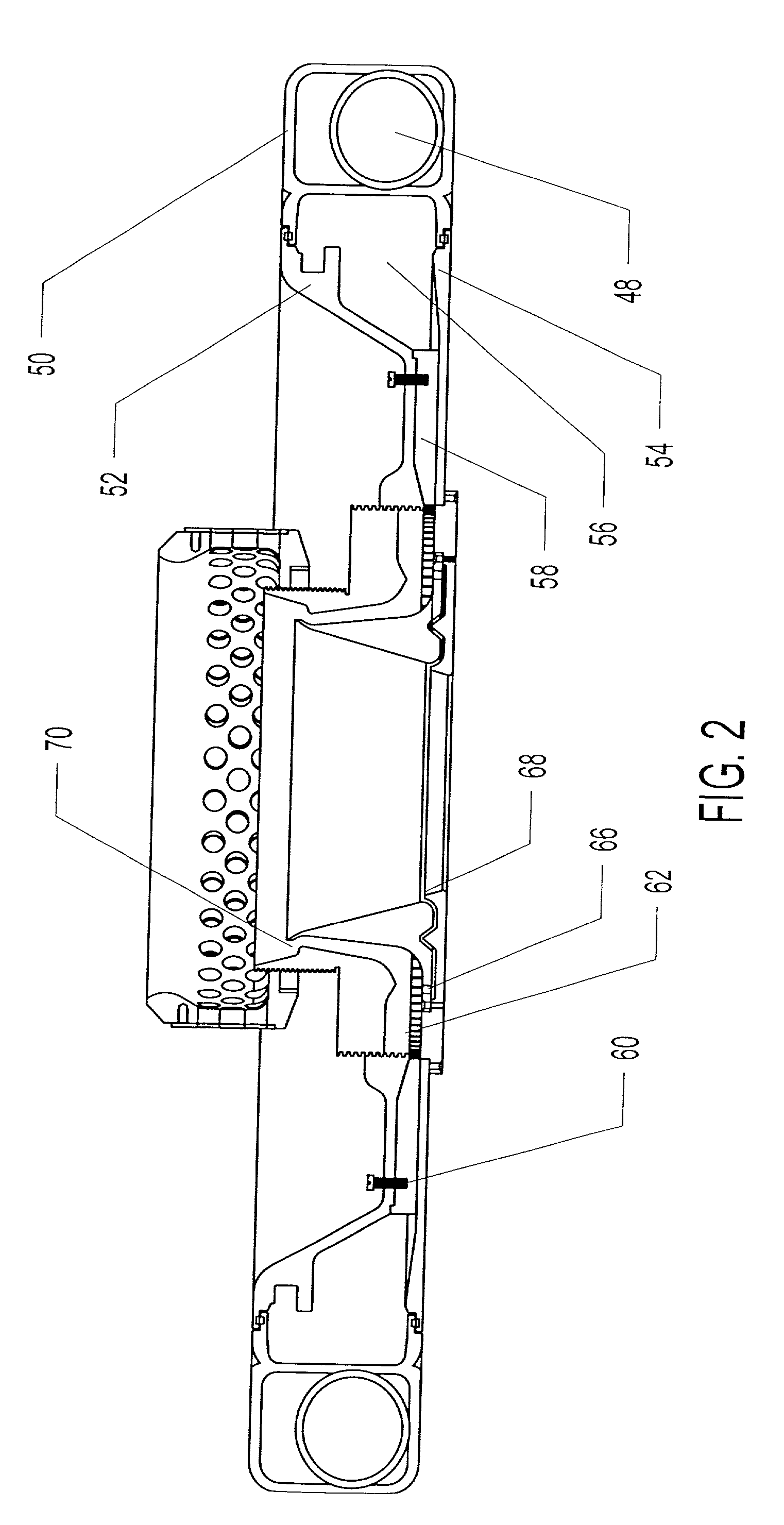External thickness control and method
- Summary
- Abstract
- Description
- Claims
- Application Information
AI Technical Summary
Benefits of technology
Problems solved by technology
Method used
Image
Examples
Embodiment Construction
[0029] FIG. 1 illustrates a known system for extrusion of molten plastic resin to form blown film. Plastic pellets are fed into a feed hopper 2 and transferred into an extruder 4 where the pellets are melted, mixed, and pressurized by the action of an extruder screw. The melt exits extruder 4 and is conveyed through a die block 6 where it is directed upwardly through a vertical neck 8 into the bottom of a blown film die 10. The plastic melt flow is designed to form an annular, cylindrical plastic melt flow 12 which is extruded from an annular orifice at the top of die 10. This annular melt flow is continually drawn away from die 10 in a manner generally concentric with a process centerline 14. The annular diameter of the cylindrical plastic melt flow 12 enlarges as it progresses from the die until it reaches a frost line 16 (indicated diagrammatically by a saw-tooth line) to form a cooled, solidified plastic tubular film bubble 18.
[0030] Primary cooling air for the process is suppli...
PUM
| Property | Measurement | Unit |
|---|---|---|
| Fraction | aaaaa | aaaaa |
| Fraction | aaaaa | aaaaa |
| Thickness | aaaaa | aaaaa |
Abstract
Description
Claims
Application Information
 Login to View More
Login to View More - R&D
- Intellectual Property
- Life Sciences
- Materials
- Tech Scout
- Unparalleled Data Quality
- Higher Quality Content
- 60% Fewer Hallucinations
Browse by: Latest US Patents, China's latest patents, Technical Efficacy Thesaurus, Application Domain, Technology Topic, Popular Technical Reports.
© 2025 PatSnap. All rights reserved.Legal|Privacy policy|Modern Slavery Act Transparency Statement|Sitemap|About US| Contact US: help@patsnap.com



